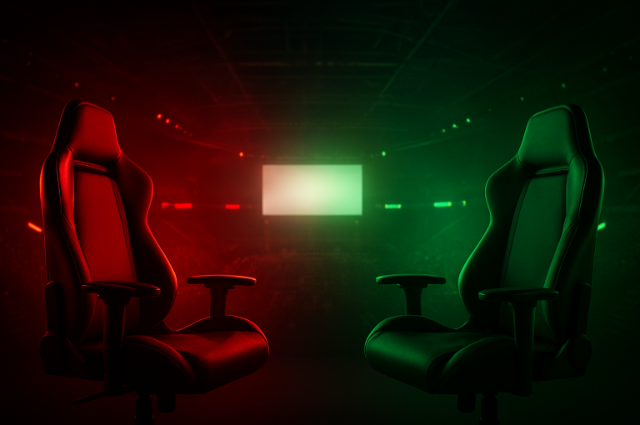
Scoreboards are supposed to settle everything. One side wins, one side loses—case closed. But in esports, that’s rarely the end of the story. Fans don’t log into Twitch or fly across the country for a LAN just to watch numbers tick up on a screen. They come for the drama. The grudges. The “I can’t believe he just said that” moments.
Think back: can you recall the exact score of every FaZe vs. OpTic showdown? Probably not. But you remember the chants, the Twitter spats, and that one OpTic fan who swore, “FaZe could only win on a LAN with 80% OpTic fans booing them.” That’s the magic of rivalries—they live longer than results.
Faker vs. Chovy: The Battle of Generations
Few rivalries capture this better than T1 vs. Gen.G in League of Legends. On one side stands Faker—“The Unkillable Demon King.” He’s been around so long that new pros literally grew up watching him. On the other side is Gen.G, representing the new guard, led by Chovy, once branded “great, but never clutch.”
That narrative shifted in August 2023, when Gen.G swept T1 3–0 in the LCK Summer Finals. Sure, the scoreboard screamed domination, but what people still talk about is the look on Faker’s face after the last Nexus fell—head down, the crowd stunned silent. Reddit lit up with thousands of comments, the top one reading: “Chovy finally exorcised his Faker demon. Took him years, but he did it.”
It wasn’t just a win. It was a symbolic passing of the torch—whether Faker’s fans wanted to admit it or not.
FaZe vs. OpTic: More Than Just Call of Duty
Then there’s FaZe vs. OpTic, the crown jewel of Call of Duty rivalries. To the untrained eye, it’s just two teams trading maps. But for fans, it’s culture versus culture.
OpTic—“The Green Wall”—grew out of grassroots fandom, YouTube montages, and Hector “H3CZ” Rodriguez’s relentless grind. FaZe, by contrast, exploded from trickshot videos into lifestyle branding. They’re not just a team—they’re a label, a hype house, an identity.
So when the two meet, it feels personal. At the 2021 CDL Major, FaZe edged OpTic 3–2, but the match wasn’t the headline. The real story came afterward: FaZe players shushing the crowd, OpTic fans firing off salty tweets, and a week-long meme war. One fan joked, “FaZe won the Major but OpTic won Twitter.” That line got more likes than FaZe’s trophy post.
Trash Talk: Entertainment and Mind Games
Rivalries don’t run on polite nods—they thrive on trash talk.
Take Apex Legends pro Phillip “ImperialHal” Dosen yelling mid-match: “Who’s talking now, bitch!” That wasn’t just a comms slip—it became a cultural moment. Within hours, it was clipped, remixed, and turned into TikToks. Months later, fans were still quoting it.
Trash talk works because it hits two audiences. For fans, it’s entertainment and instant memes. For players, it’s psychological warfare. Esports even has a word for when it works too well: tilt—when frustration breaks focus, and mistakes follow. Rivalries feed on tilt. A smirk, a sarcastic tweet—it’s all fuel.
Rivalries Live on Social Media
Matches end. Twitter doesn’t.
In esports, rivalries thrive on timelines, Twitch chat, TikTok edits, and Discord debates. Few orgs understand this better than G2 Esports. Their Twitter/X account is essentially a second roster armed with memes.
When G2 beat Fnatic, they didn’t post stats. They spammed memes: a “Fnatic fan starter pack,” juggling clown GIFs, even self-deprecating jokes. Fnatic fans raged, G2 fans laughed—and the rivalry grew.
Social media is the new coliseum. A snarky tweet can cut deeper than a clean ace. And fans are always watching.
Rivalries and Vocabulary
Esports rivalries even shape the language fans use:
- Tilt: frustration spilling into mistakes.
- Clutch: the legendary 1v3 win, made sweeter against rivals.
- Meta: the “best way to play”—often the battleground for fan debates.
- Scrims: practice matches where rivalries quietly ignite.
Knowing this vocabulary isn’t just about gameplay—it’s about joining the culture rivalries build.
More Than the Score
The scoreboard brings closure. Rivalries bring memory.
Take the 2018 Overwatch League Grand Finals: London Spitfire swept Philly Fusion. Easy headline. But fans today don’t remember “2–0.” They remember Philly’s underdog run, Carpe’s insane risks, and the thrill of “what if.”
Or Na’Vi vs. Astralis in CS:GO: not just rounds won, but two philosophies clashing—Astralis’ methodical utility versus Na’Vi’s “give s1mple the AWP and watch the world burn.” That’s what stuck.
The Road Ahead
Esports is exploding: bigger tournaments, bigger audiences, bigger money. And rivalries? They’re the fuel. Organizers hype grudge matches. Sponsors back the loudest teams. Drama sells.
With TikTok, Reels, and Shorts, rivalries spread faster than ever. A five-second smirk or handshake snub can dominate feeds for days. Rivalries aren’t just competition—they’re part of esports entertainment itself.
Conclusion: Why We Keep Coming Back
Numbers fade. Rivalries last.
When FaZe meets OpTic, when T1 faces Gen.G, when a player finally beats the opponent who’s haunted them—those are the moments fans carry. The score resets tomorrow. The story doesn’t.
That’s why in esports, rivalries always talk louder than the scoreboard. And thank goodness they do—because without them, we’d just be watching numbers go up and down.
